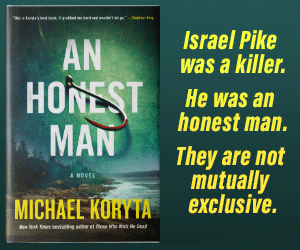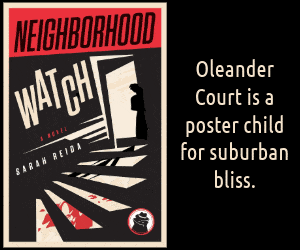
The only way to solve a mystery, as a writer, is to become a criminal. A master thief, a safe cracker, or maybe a trained assassin. Suspension of disbelief depends on realism, so an author must become an expert in all sorts of illicit professions and sordid pastimes to build a compelling cast of characters. Details matter—not only to the detective looking for clues—but also for readers who will stop turning the pages the instant you get something wrong.
The opening chapter of my latest novel, Hanging the Devil, is a daring art heist that goes horribly wrong when a helicopter crashes through the skylight of a museum. The chapter is only five pages long, but it took over six months to conduct the research for that one scene.
To begin, I had to learn how to fly a Sikorsky helicopter, at least on paper. What is the lift capacity, how many paintings and sculptures could fit in the cargo area, and how much does a crew of art thieves weigh, fully clothed? I studied floor plans for the museum, city maps of the surrounding streets, and gave myself a crash course in hacking alarm systems. I visited other museums, on more than one occasion getting suspicious looks from guards who wondered why I was more interested in the security cameras than the paintings on the wall.
For those of you looking to write about the underbelly of the art world, here are five things I discovered that might spare you some legwork when you begin your research:
1. Security at many museums is far less elaborate than at a typical bank. When thieves disguised as cops ambled away with $500 million worth of art from the Isabella Stewart Gardner Museum in Boston, nobody could believe it was that easy. This is particularly true at museums in smaller markets across Europe, where admission fees and operating budgets don’t support state-of-the-art surveillance systems.
2. Masterpieces by artists like Rembrandt or Monet are frequently bought as investments by the very rich, but art is also used as collateral by organized crime, held in escrow during a drug or weapons buy. Priceless art is also taken for ransom, because thieves know governments and galleries will discreetly pay rather than risk a rare da Vinci be destroyed.
3. Most museum burglaries are committed in less than ten minutes. Actual heists have involved helicopters, speed boats, and carefully orchestrated diversions, such as car explosions rigged to blow in another part of the city while the thieves hit the museum. Organized gangs specializing in art crimes know exactly which pieces to take and which to leave behind.
4. Quite a few “masterpieces” on sale at auction houses or displayed at museums are actually forgeries. This came as quite a surprise until I learned more about how a painting gets vetted by experts and displayed at a museum. The talent of a master forger is mind-boggling, a skill that goes back thousands of years and involves not only brush techniques but knowledge of the chemical composition of paints and materials. All it takes is one person in the chain of certification to make a mistake or take a bribe before a painting that appears to be a Rembrandt is verified as such in a catalog, and once it’s provenance is in print and the painting is on display, everyone assumes it’s legit. As a painting moves up in price, it’s in everyone’s interest for it to be authentic, so nobody kicks the tires very hard.
5. Watching The Thomas Crown Affair, both the original with Steve McQueen and Faye Dunaway and the remake with Rene Russo and Pierce Brosnan, is actually a good use of your time. Both movies balance the excitement of the chase with the growing tension between the characters, and the pacing and level of detail is just about right for a crime novel that keeps you turning the pages. (Just tell yourself that you’re not procrastinating instead of writing your book, you’re doing research.)

Tim Maleeny’s latest caper is called Hanging The Devil, a global art heist that Library Journal describes in a starred review as having “a relentlessly fast-paced plot and delightful dry humor.” He is the bestselling author of the thriller JUMP, which Publishers Weekly calls “a perfectly blended cocktail of escapism” and the award-winning Cape Weathers Mysteries. “If comic crime fiction is your thing, Maleeny delivers in spades,” says The Irish Times. Tim lives and writes in New York City.






